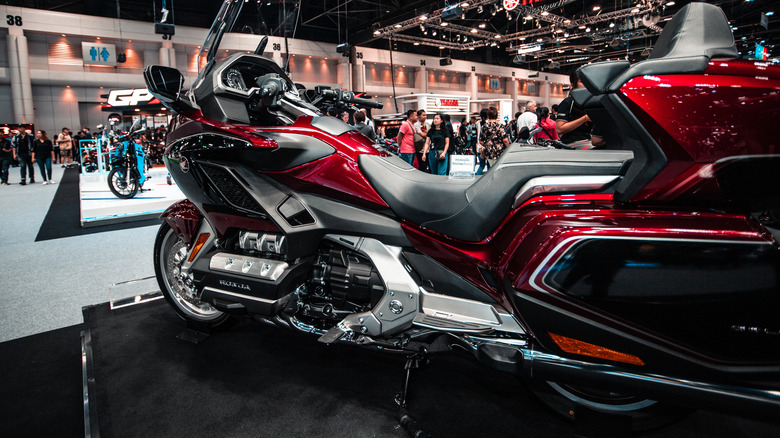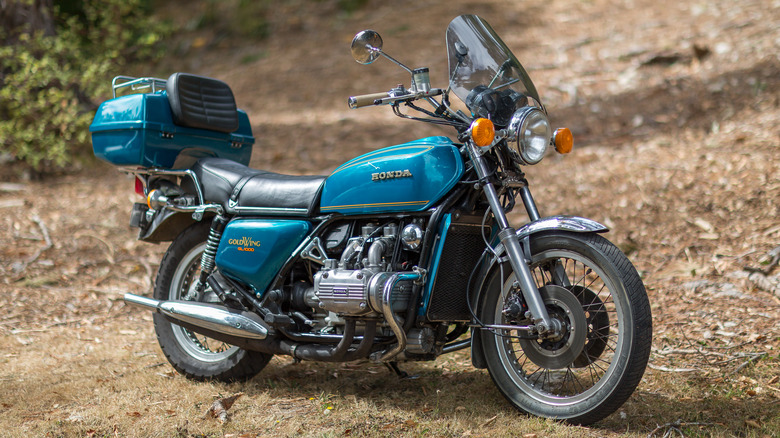Honda's M1 Concept Motorcycle Directly Led To The Gold Wing's Creation
The Honda Gold Wing has been a stone-cold classic since its debut. Out-Harleying Harley-Davidson as a comfortable, versatile long-distance cruiser with serious straight-line power, the Gold Wing is a powerful presence in the motorcycle world since its release in 1974. The engine in particular draws accolades for its power and reliability, and the Gold Wing's fixtures and fittings define top-of-the-line luxury across the worldwide road bike market.
However, Honda owes much of the Gold Wing's success — and therefore much of its position as a major figure in the American cruiser pantheon — to a prototype bike that never even reached consumers. Without this mighty yet mysterious beast, there would have been no Honda Gold Wing, and potentially no resurgence of Japanese makers in the luxury motorcycle marketplace.
Instead, the innovations from the design of the Honda M1 Prototype became the features gearheads worldwide loved about the Gold Wing and its successors.
An unassuming superstar
Compared to its chunky, comfy descendants, Honda's M1 had fairly simple styling and almost no quality-of-life frills. As Motorcycle Specs reports, the M1 was always intended as a prototype — there were never plans to manufacture it. Leaving out the visuals saved money, and allowed for easy experimentation.
That experimentation was extensive and long-lasting, informing Honda motorcycle design for decades to come. As far back as the late 1960s, when Honda was still primarily known as a builder of scooters and race bikes, legendary designer Soichiro Irimajiri already saw potential for a big, powerful long-distance rider. As Hagerty notes, Honda didn't even build cars for U.S. drivers until 1969, let alone high-cost touring motorcycles.
In 1972, Irimajiri got his design team and a free hand. What resulted was the original M1, a superbike before "superbike" was even a concept. Per Motorcycle Specs, the M1 lacked the fairing and comfort considerations of production Gold Wings. The prototype was pure performance: a gigantic flat-six cooled with water jets and mounted lengthwise on a steel frame.
Control issues would scale back the original Gold Wing to a 4-pot, and later models would sport heavy fairings and quality of life considerations suited to a long-distance bike. Still, the M1 remained the Gold Wing's soul: Per Rider Magazine, the bike even got its flat-six back in 1988. More importantly, Irimajiri's M1 proved to Honda that Japanese manufacturers could build high-powered, high-priced touring bikes every bit as well as Harley and Triumph.

